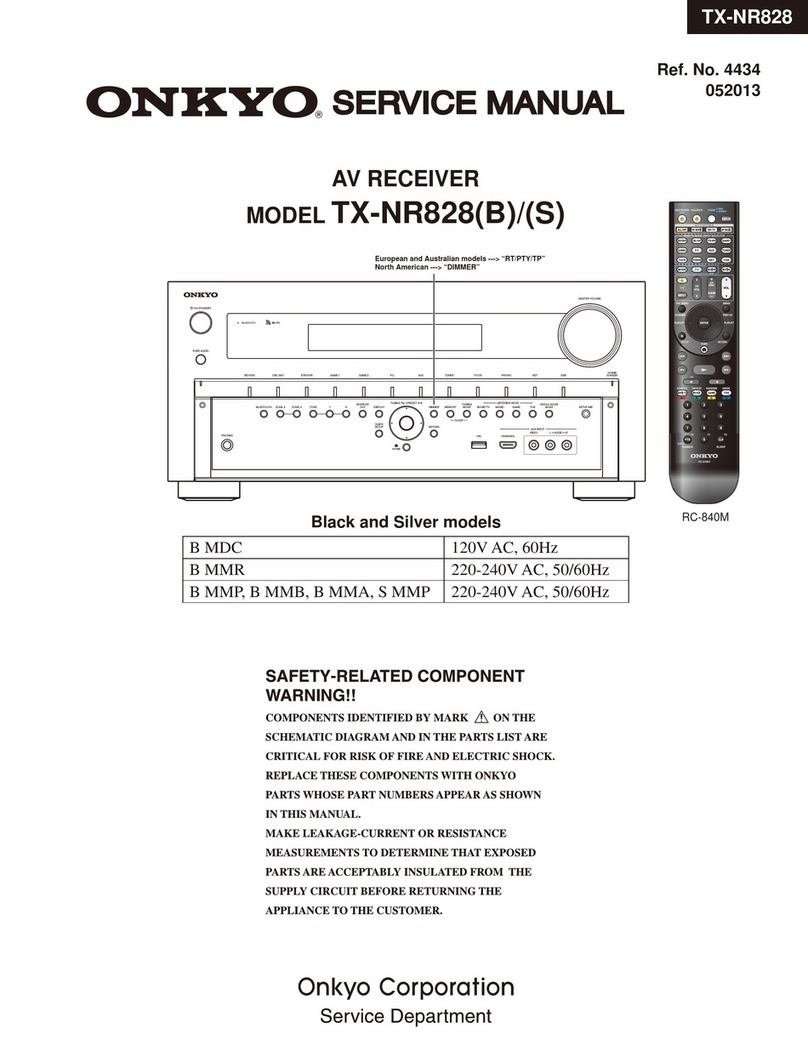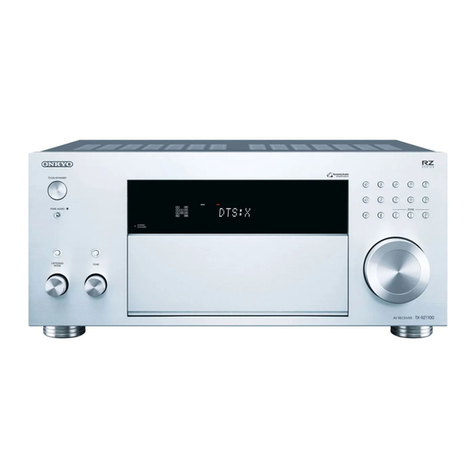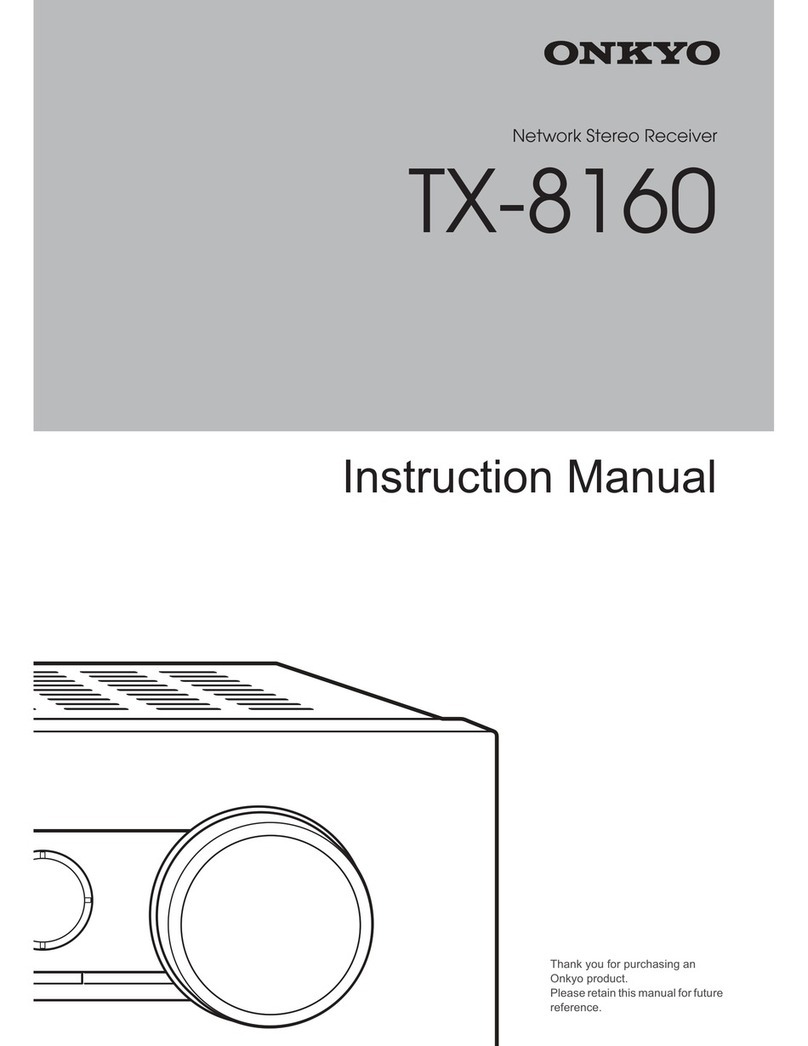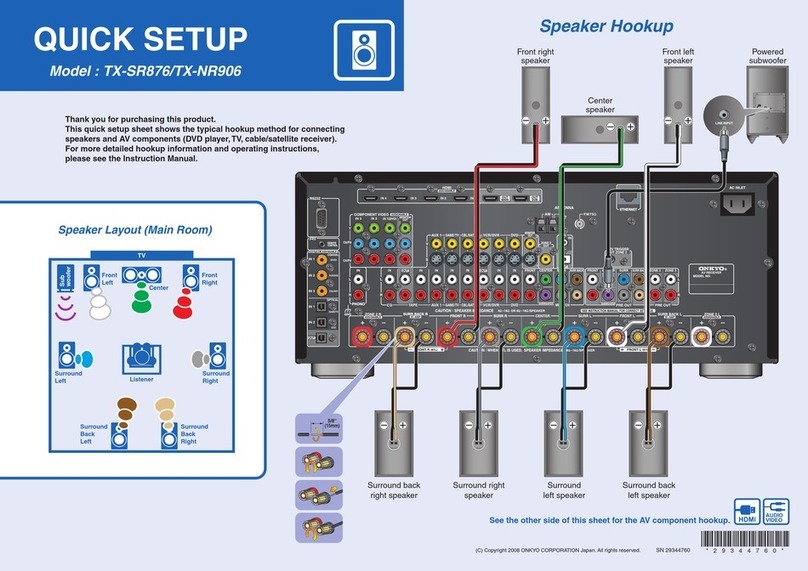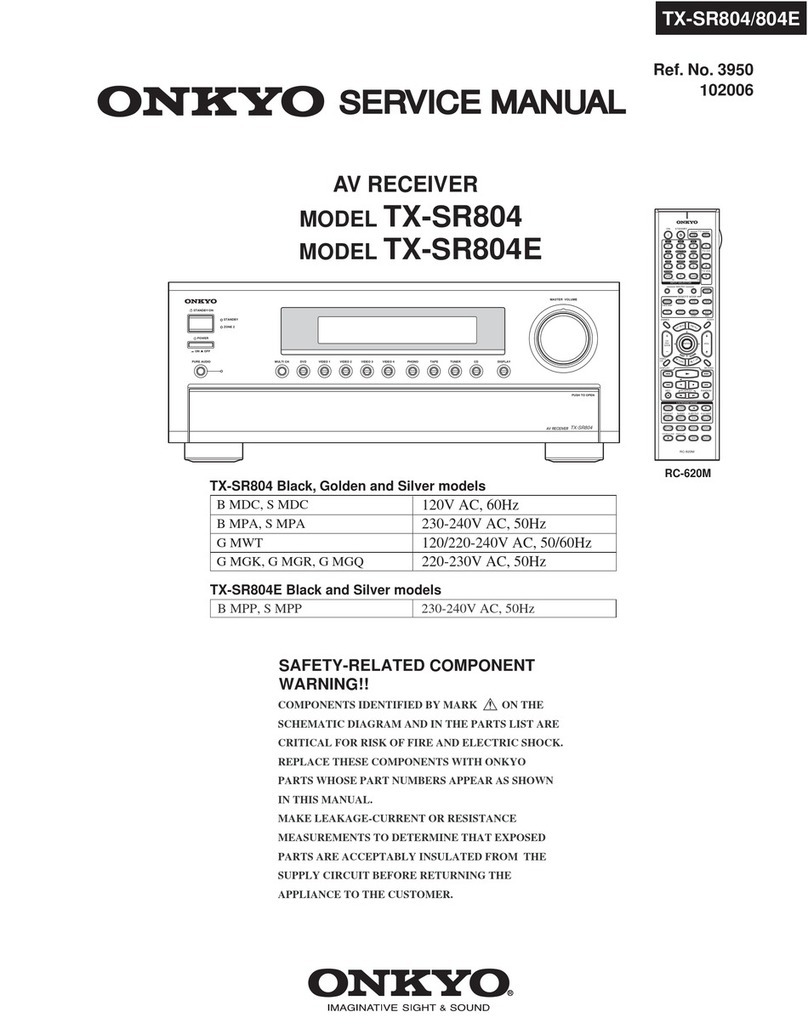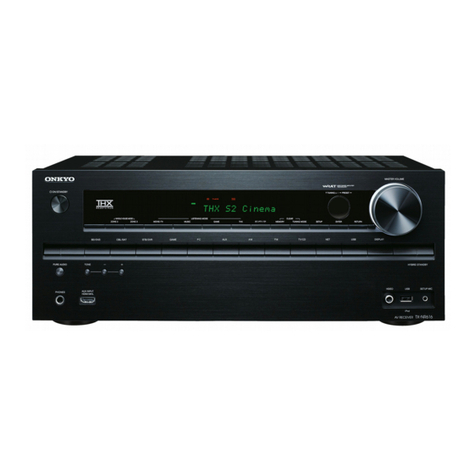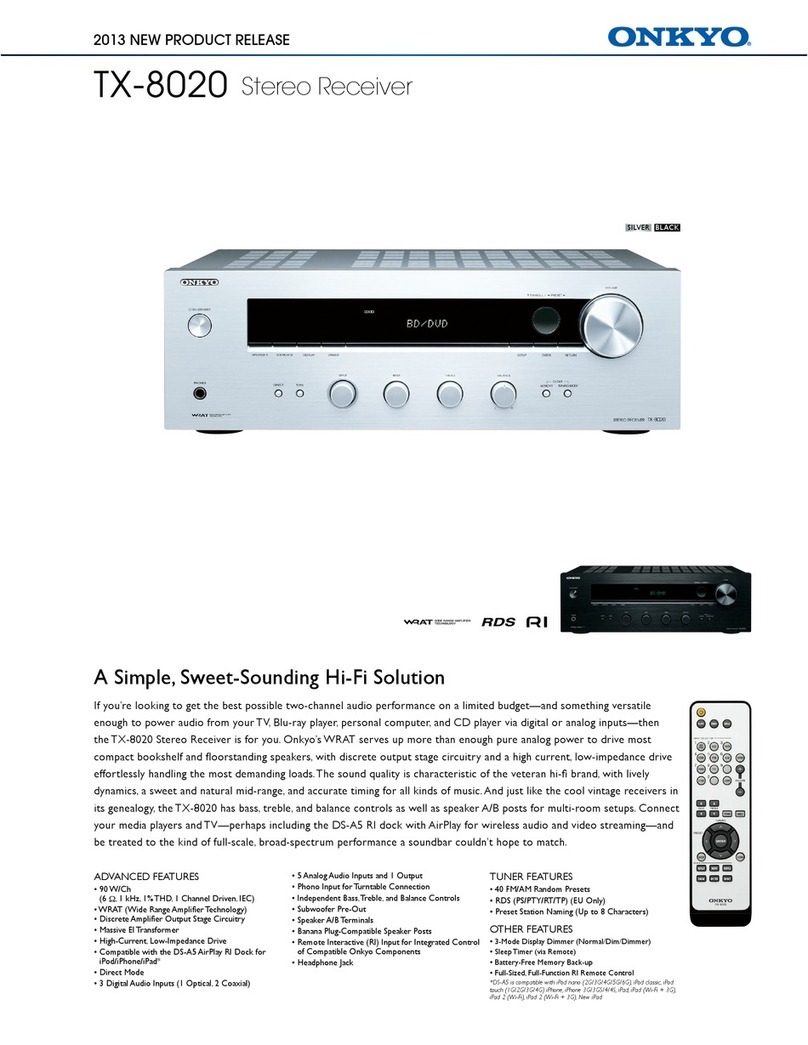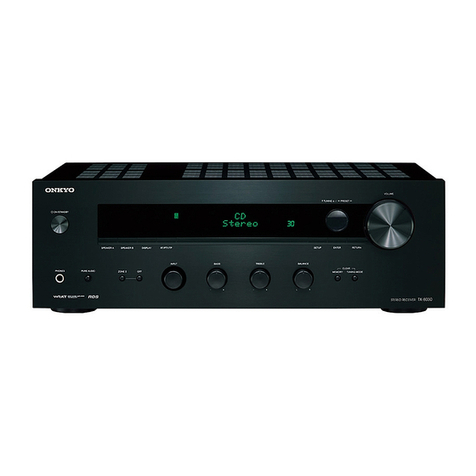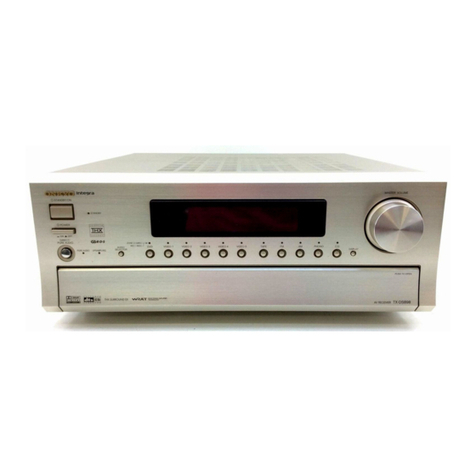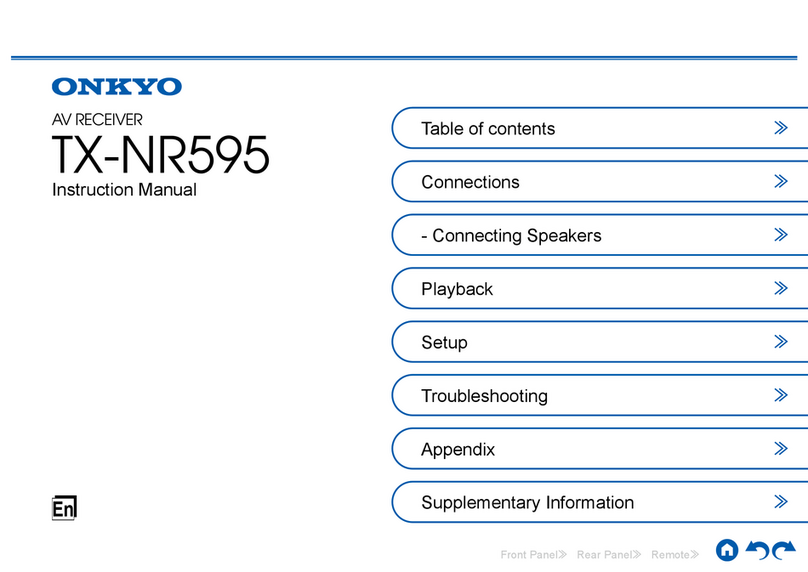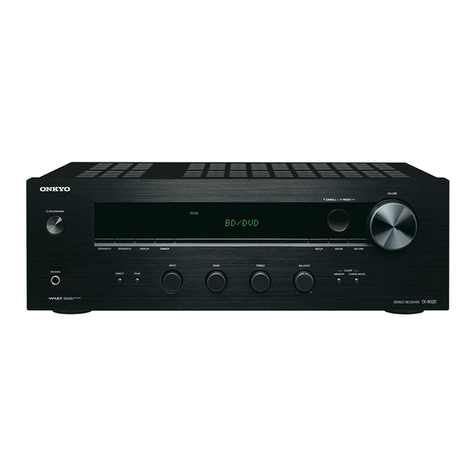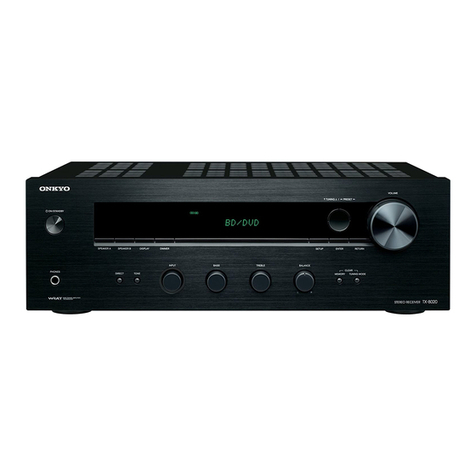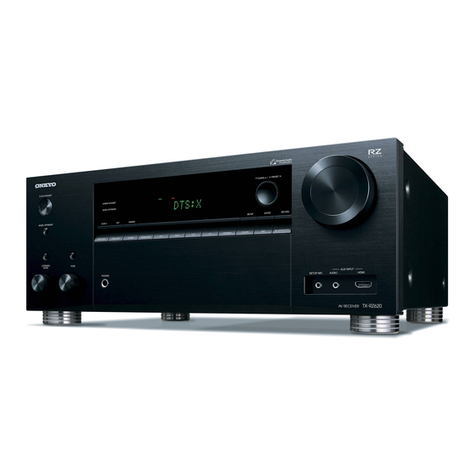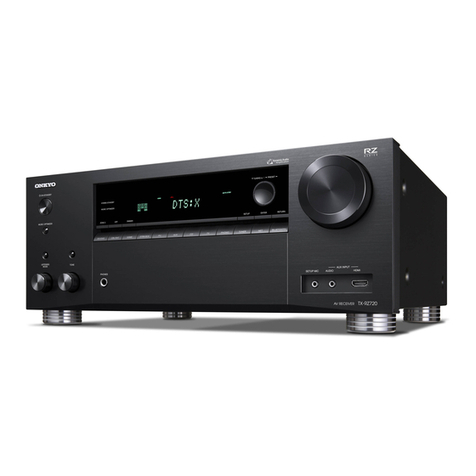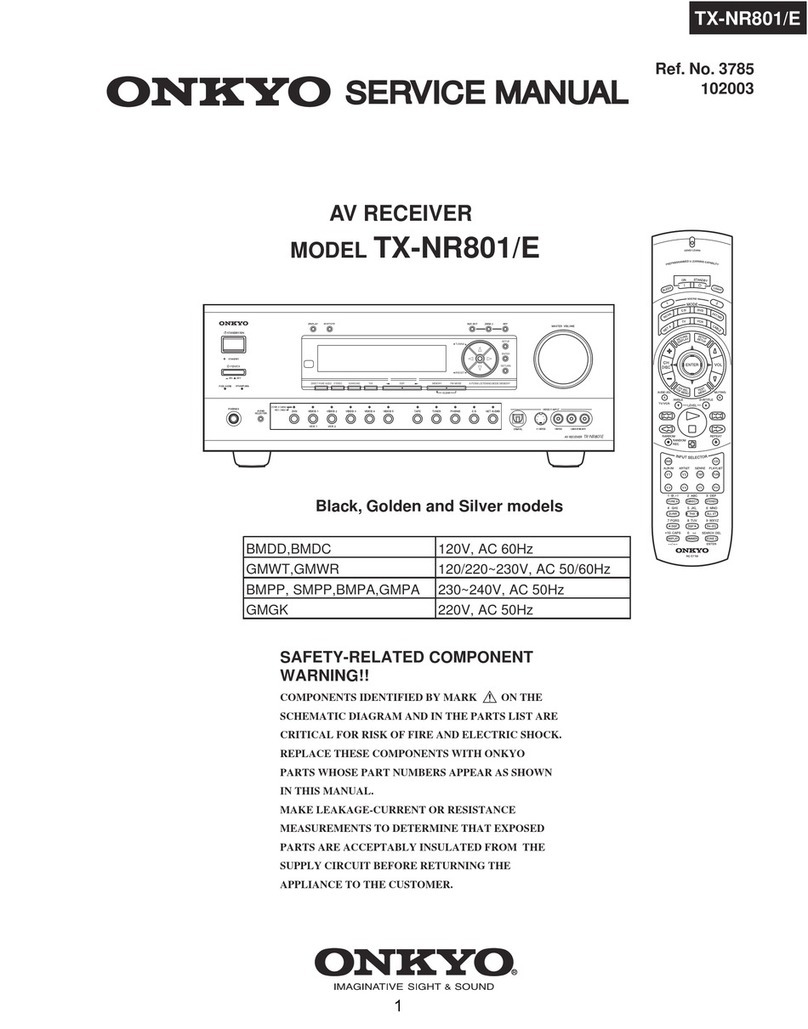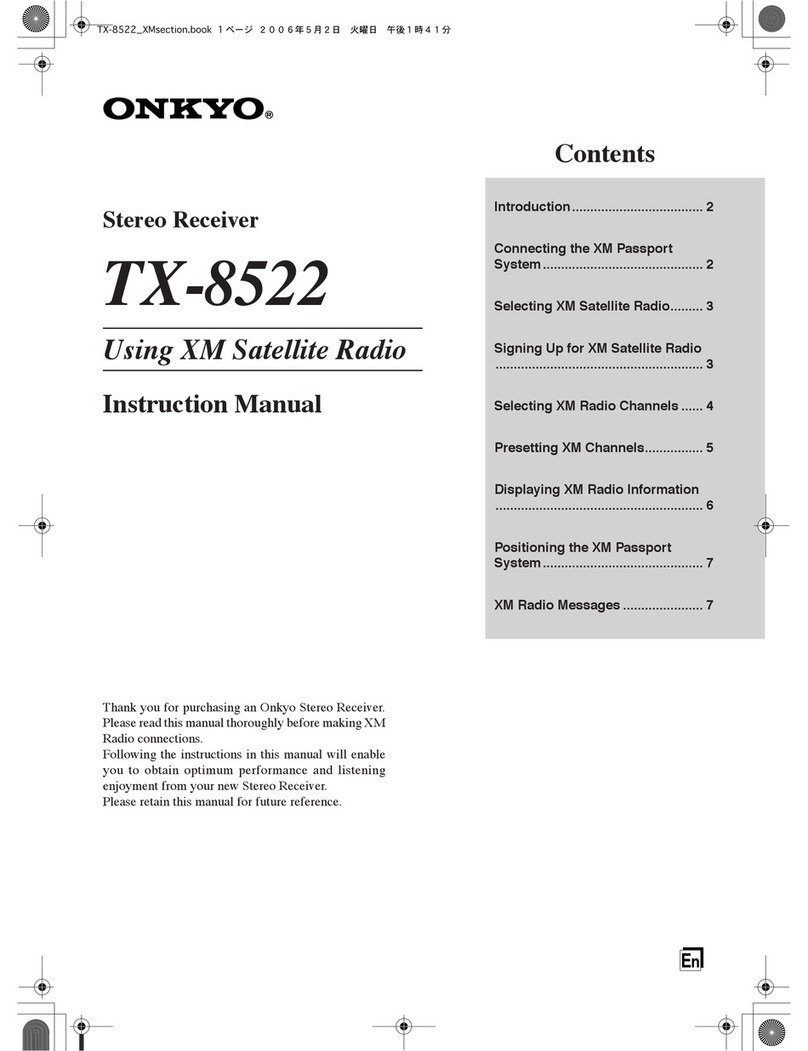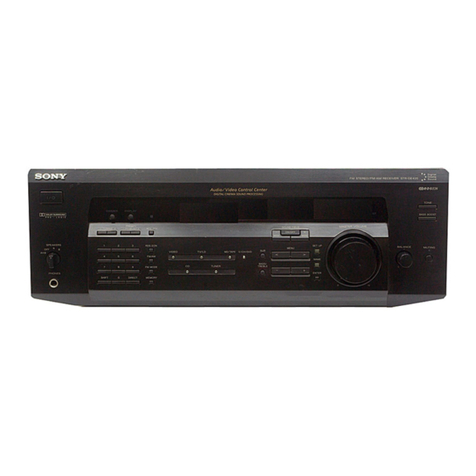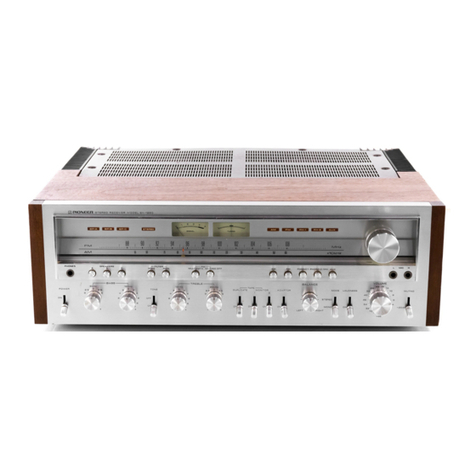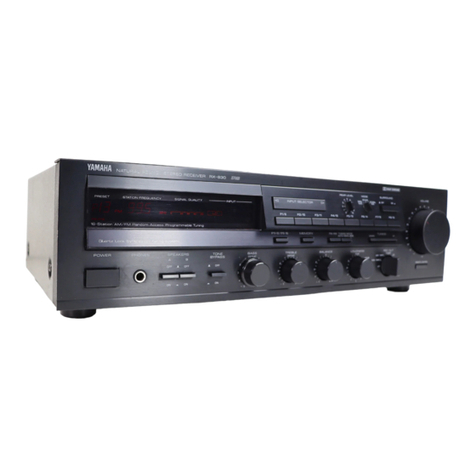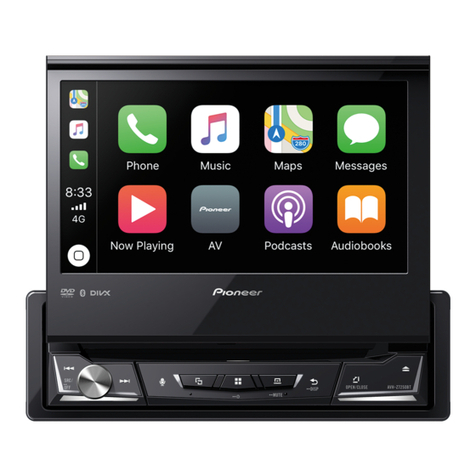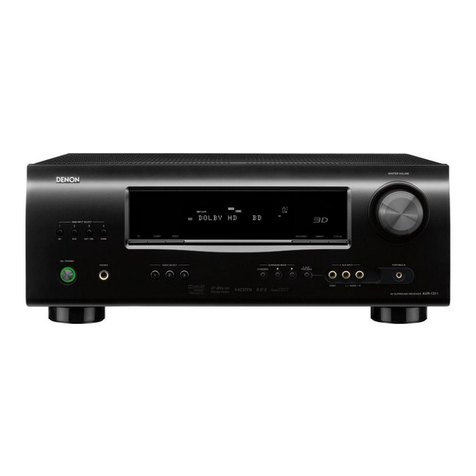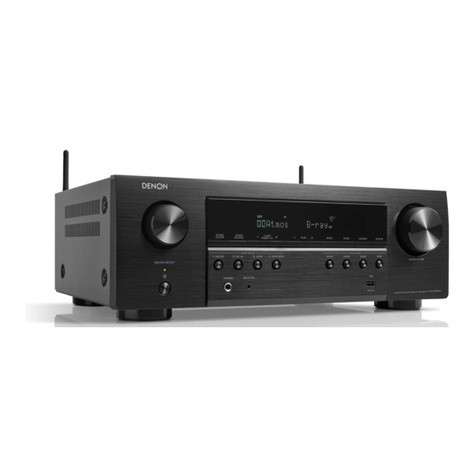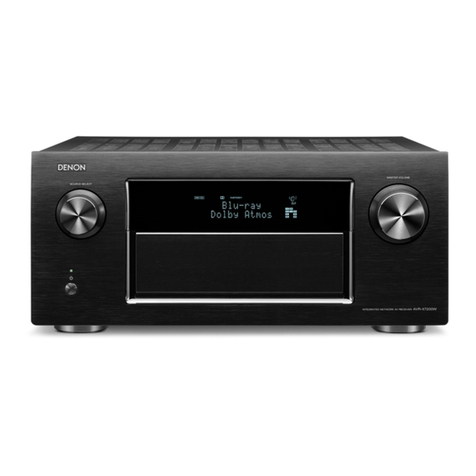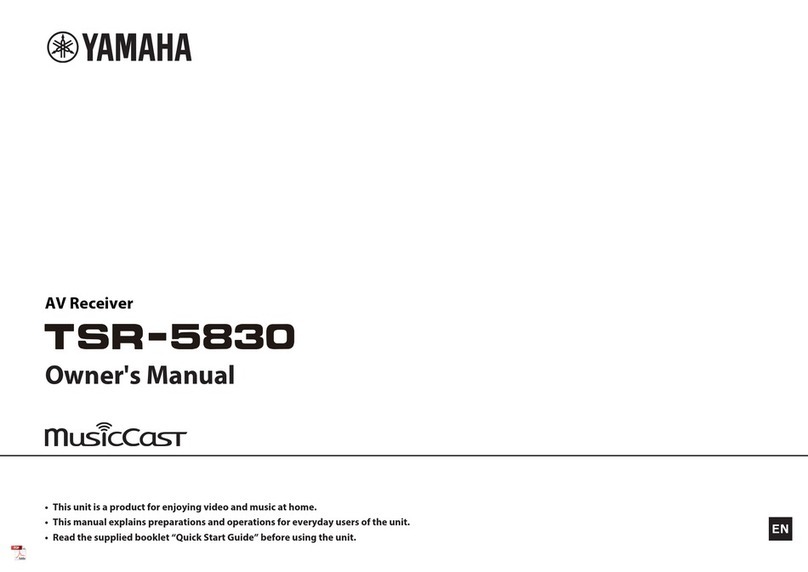
Thank
YOU
for
purchasing
the
Onkyo
TX-8211
FM
Stereo/AM
Receiver.
Please
read
this
manual
thoroughly
before
making
con-
nections
and
operating
the
unit.
Following
the
instructions
in
this
manual
will
enable
you
to
obtain
optimum
performance
and
listening
enjoyment
from
your
new
Receiver.
Please
retain
this
manual
for
future
reference.
Features
@
Power
output
USA
&
Canadian
models:
50
watts
per
channel,
min
RMS,
at
8
ohms,
both
channels
driven
from
20
Hz
to
20
kHz,
with
no
more
than
0.08%
THD.
European
models:
,
2x
70
watts
at
4
ohms,
1
kHz
(DIN)
Asian
models:
2
x
90
watts
at
4
ohms,
|
KHz
(EIAJ)
@
Discrete
output
stage
circuits
for
true
high-current,
low-impedance
drive
M@
Costly,
high-quality
parts
such
as
large
power
tran-
sistors,
an
oversized
isolated
transformer
and
heavy-
duty
extruded
heat sink
makes
it
possible
to
accu-
rately
and
effortlessly
drive
4-ohm
speakers
(rare
for
a
receiver)
@
4
Audio
inputs
@
A/B
Speaker
selector
and
outputs
@
Cassette
tape
dubbing
capability
@
Selective
tone
control
M@
2-Mode
APR
(Automatic
Precision
Reception)
(local/
DX,
auto/mono)
@
30
FM/AM
random
presets
@
Preset
scan
tuning
@
3
Station
group
presets
(10
stations
per
group)
@
RDS
with
PS,
PTY,
RT,
TP
(European
and
some
other
models
only)
@
Direct
access
tuning
HB
Motor-driven,
precision
volume
control
@
Headphone
jack
@
Audio
mute,
sleep
timer
(via
remote)
@
Battery-free
memory
backup
@
New
non-resonant
feet
@
New
slip-free
rotary
volume
knob
@
Rt
Compatible
remote
control
’
FOR
U.S.A.
MODEL
*
Note
to
CATV
system
installer:
e
This
reminder
is
provided
to
call
the
CATV
system
installer’s
attention
to
Section
820-40
of
the
NEC
which
provides
guide-
lines
for
proper
grounding
and,
in
particular,
specifies
that
the
cable
ground
shall
be
connected
to
the
grounding
system
of
the
building,
as
close
to
the
point
of
cable
entry
as
practical.
_
FOR,CANADIAN
MODEL
:4/'¢.,..
~
POUR
LEMODELE
CANADIEN’
e@
For
models
having
a
power
cord
with
a
polarized
plug.
CAUTION:
TO
PREVENT
ELECTRIC
SHOCK,
MATCH
WIDE
BLADE
OF
PLUG
TO
WIDE
SLOT,
FULLY
INSERT.
e
Sur
les
modéles
dont
lit
fiche
est
polarisée.
ATTENTION:
pPouR
EVITER
LES
CHOCS
ELEC-
TRIQUES,
INTRODUIRE
LA
LAME
LA
PLUS
LARGE
DE
LA
FICHE
DANS
LA
BORNE
CORRESPONDANTE
DE LA
PRISE
ET
POUSSER
JUSQU’AU
FOND.
_
FOR
EUROPEAN
MODEL.
BOIS
Fire
RTO
eK)
©
Soha
TS
CNR
CRE
SO)
Declaration
of
Conformity
We,
ONKYO
EUROPE
ELECTRONICS
GMBH
INDUSTRIESTRASSE
18/20
82110
GERMERING,
GERMANY
declare
in
own
responsibility,
that
the
ONKYO
product
described
in
this
instruction
manual
is
in
compliance
with
the
corresponding
technical
standards
such
as
EN55013,EN55020,EN60555-2,
EN60065
GERMERING,GERMANY
=
Cem
H.
YAMAZOE
ONKYO
EUROPE
ELECTRONICS
GMBII
..:
id
3B
4S
ET
Re
i
Pra
+
p
ATTENTION
FOR
BRITISHMODEL.
~
—s
Replacement
and
mounting
of
an
AC
plug
on
the
power
supply
cord
of
this
unit
should
be
performed
only
by
qualified
service
personnel.
IMPORTANT:
The
wires
in
the
mains
lead
are
coloured
in
accordance
with
the
following
code:
Blue:
Neutral
Brown:
—
Live
As
the
colours
of
the
wires
in
the
mains
lead
of
this
appliance
may
not
correspond
with
the
coloured
markings
identifying
the
termi-
nals
in
your
plug,
proceed
as
follows:
The
wire
which
is
coloured
BLUE
must
be
connected
to
the
termi-
nal
in
the
plug
which
is
marked
with
the
letter
N
or
coloured
BLACK.
'
:
The
wire
which
is
coloured
BROWN
must
be
connected
to
the
ter-
minal
in
the
plug
which
is
marked
with
the
letter
L
or
coloured
RED.
IMPORTANT
A
5
amp
fuse
is
fitted
in
this
plug.
Should
the
fuse
need
to
be
replaced
please
ensure
that
the
replacement
-fuse
has
a
rating
of
5
amps
and
that
it
is
approved
by
ASTA
or
BSI
to
BS
1362.
Check
for
the
ASTA
inark
or
the
BSI
mark
on
the
body
of
the
fuse.
I¥
THE
FITTED
MOULDED
PLUG
IS
UNSUITABLE
FOR
THE
SOCKET
OUTLET
IN
YOUR
HOME
THEN
THE
FUSE
SHOULD
BE
REMOVED
AND
THE
PLUG
CUT
OFF
AND
DISPOSED
OF
SAFELY,
THERE
IS
A
DANGER
OF
SEVERE
ELECTRICAL
SHOCK
IF
THE
CUT
OFF
PLUG
IS
INSERTED
INTO
ANY
13
AMP
SOCKET.
[fin
any
doubt
please
consult
a
qualified
electrician.
